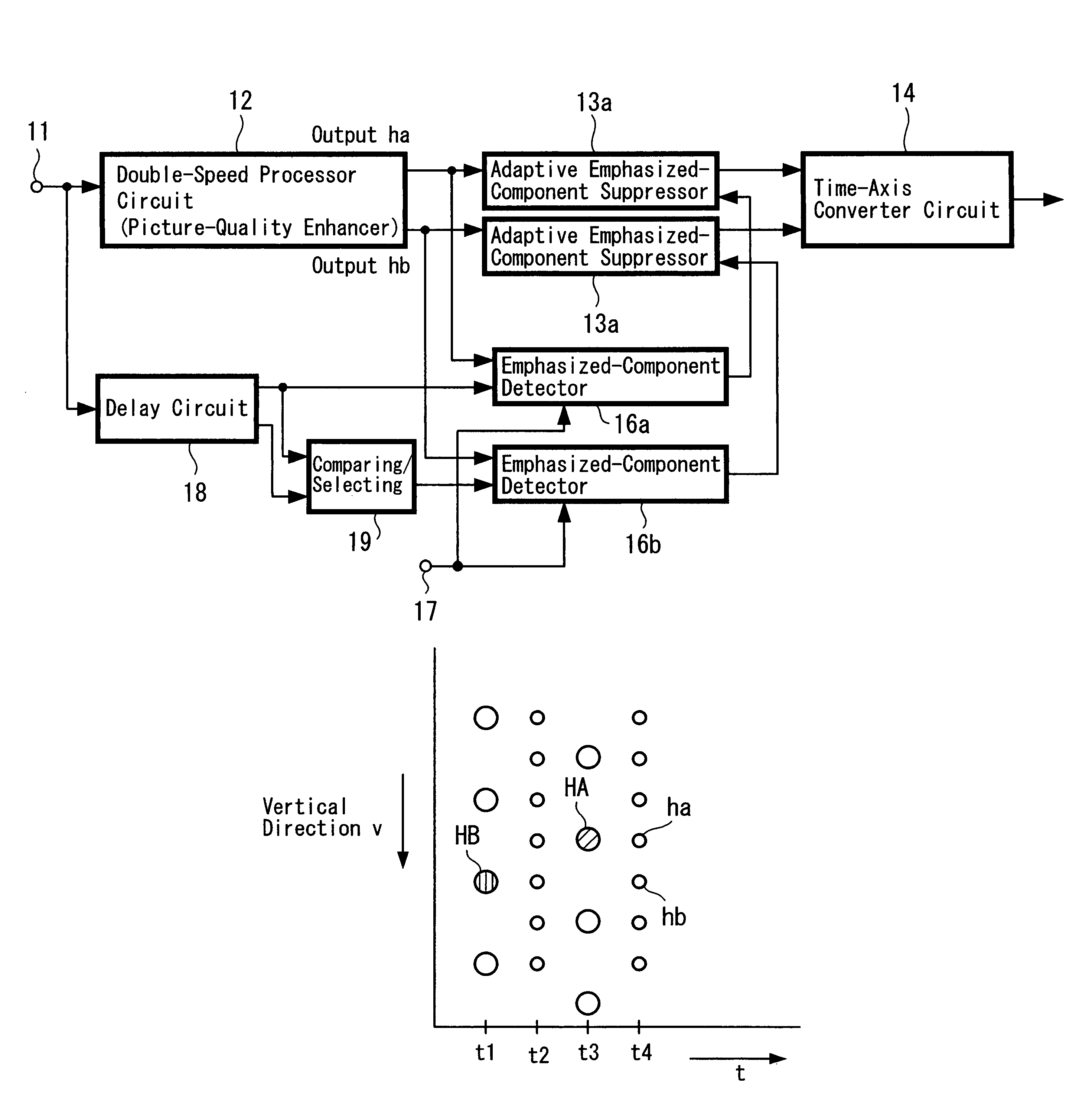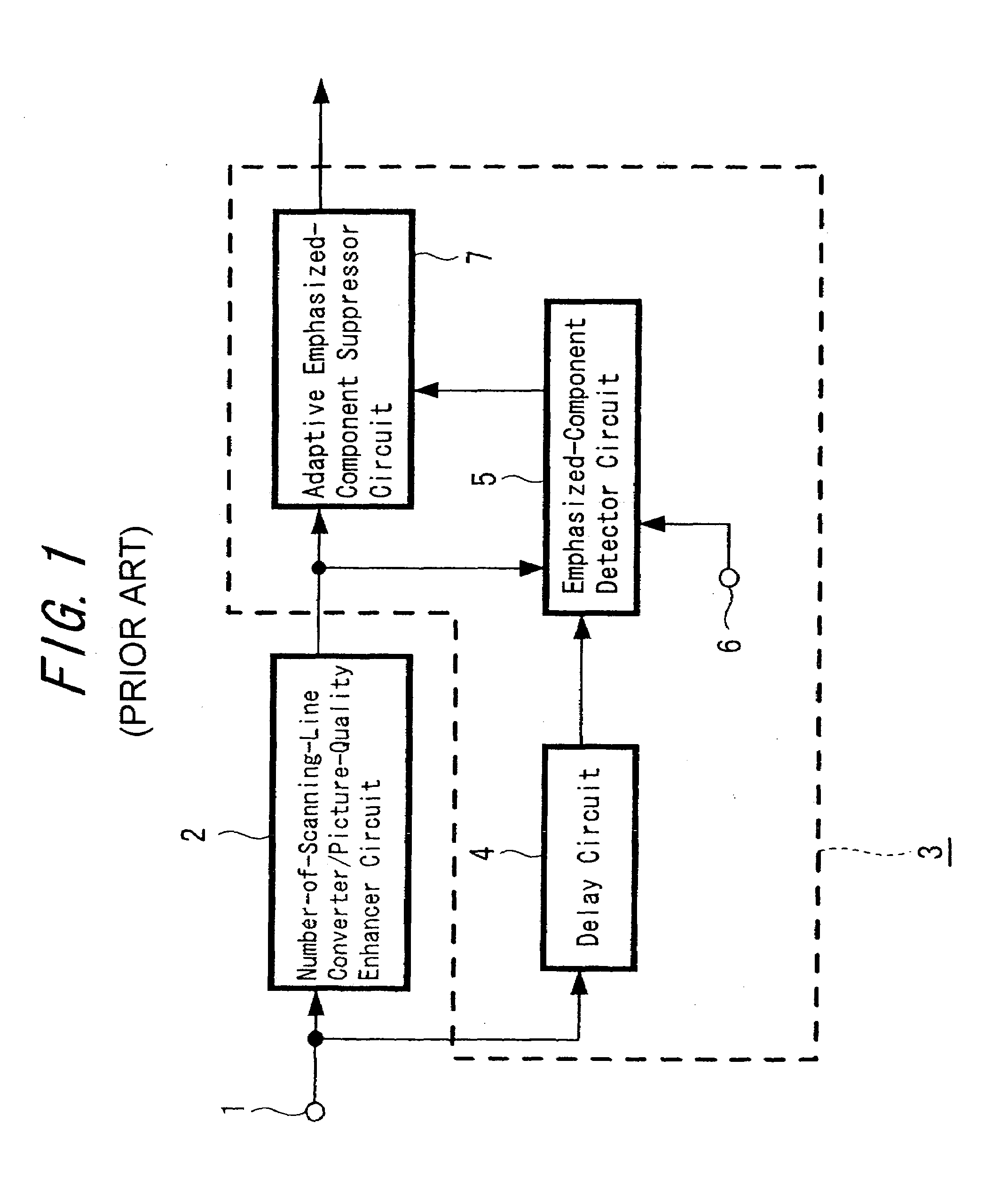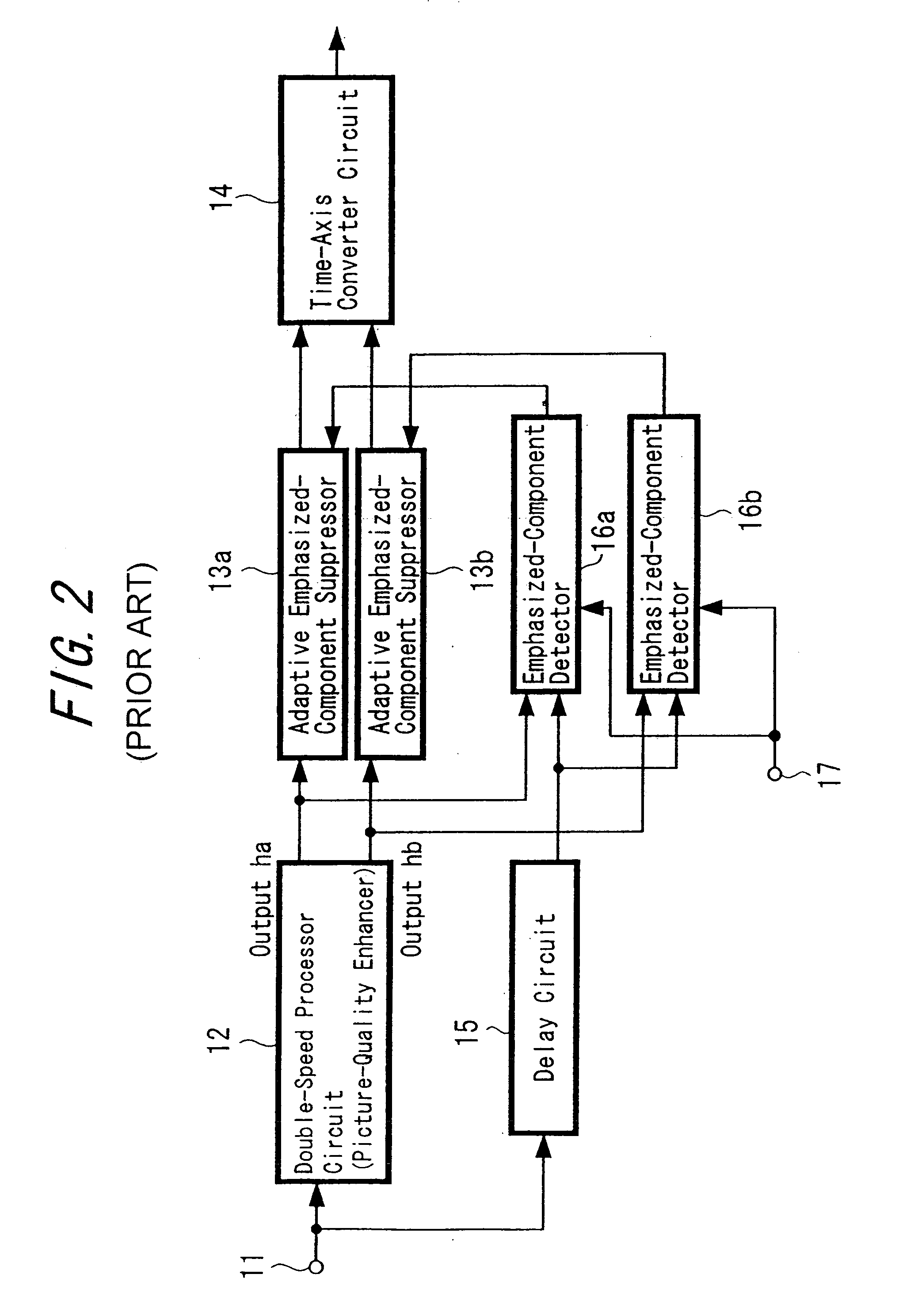Video signal processing method and device
a video signal and processing method technology, applied in the direction of signal generators with optical-mechanical scanning, picture reproducers using projection devices, television systems, etc., can solve the problems of picture quality deterioration described above, too high intensity level at the edge portion, and liable to be noticed, so as to achieve satisfactory suppression of overemphasized components, simple structure of making, and satisfactory detection
- Summary
- Abstract
- Description
- Claims
- Application Information
AI Technical Summary
Benefits of technology
Problems solved by technology
Method used
Image
Examples
first embodiment
[0033]The first embodiment according to the present invention will be described below with reference to FIGS. 3 to 5.
[0034]FIG. 3 is a diagram showing a structure example for making video-signal processing according to this embodiment. Circuits of this embodiment are those applied to a television set and the like, in which a video signal or the like received by a tuner is supplied to an input terminal 11. The video signal obtained at the input terminal 11 is supplied to a double-speed processor circuit 12 which performs the so-called double-speed conversion processing to double the number of scanning lines. In this case, the video signal obtained at the input terminal 11 is a digitized video signal and the double-speed conversion processing is performed in a digital form. When the double-speed processor circuit 12 performs the double-speed conversion processing, it also performs the picture-quality enhancement processing. This picture-quality enhancement processing may sometimes be ...
second embodiment
[0049]Next, the second embodiment according to the present invention will be described with reference to FIGS. 6 and 7.
[0050]FIG. 6 is a diagram showing a structure example of performing video-signal processing according to this embodiment. In this example, a video signal obtained at an input terminal 21 is supplied to a time-axis converter circuit 22, which performs processing of converting twice the number of scanning lines of the input video signal. However, this circuit 22 performs only time-axis conversion processing which repeats a signal of the same line merely twice to output. The signal converted twice in the number of scanning lines by the time-axis converter circuit 22 is supplied to a number-of-scanning-line converter circuit 23 for picture-quality enhancement processing. In this processing to enhance picture quality, signals of the adjacent line, signals of the adjacent field or the like are referred to.
[0051]The video signal double-speed-converted and enhanced in pictu...
PUM
 Login to View More
Login to View More Abstract
Description
Claims
Application Information
 Login to View More
Login to View More - R&D
- Intellectual Property
- Life Sciences
- Materials
- Tech Scout
- Unparalleled Data Quality
- Higher Quality Content
- 60% Fewer Hallucinations
Browse by: Latest US Patents, China's latest patents, Technical Efficacy Thesaurus, Application Domain, Technology Topic, Popular Technical Reports.
© 2025 PatSnap. All rights reserved.Legal|Privacy policy|Modern Slavery Act Transparency Statement|Sitemap|About US| Contact US: help@patsnap.com



